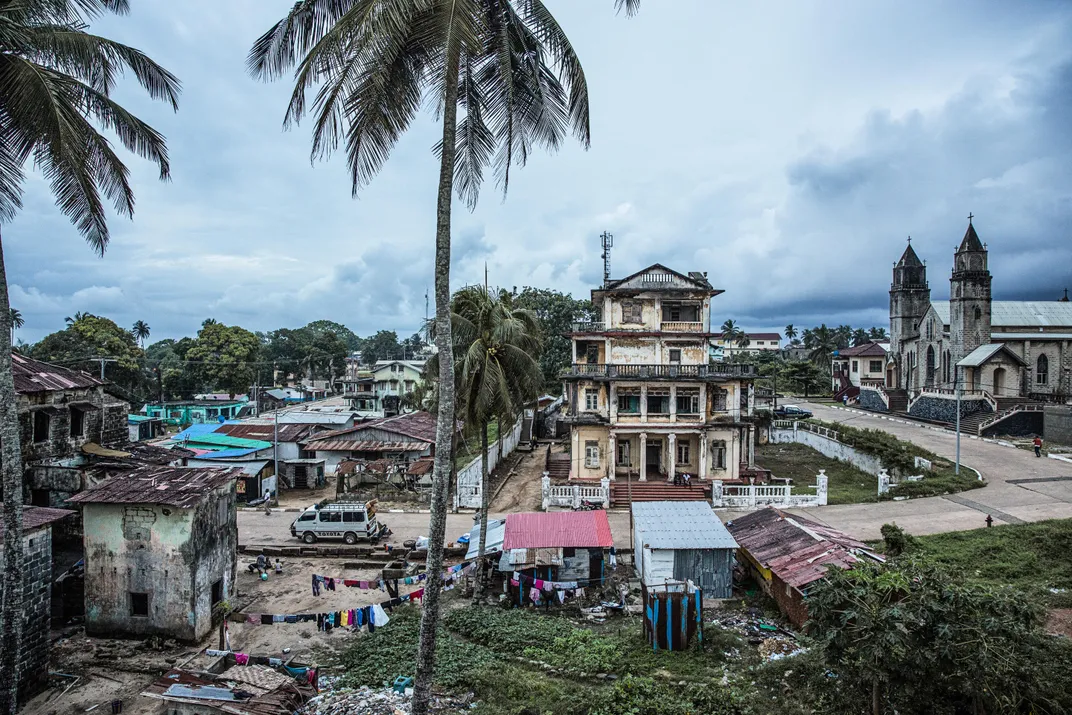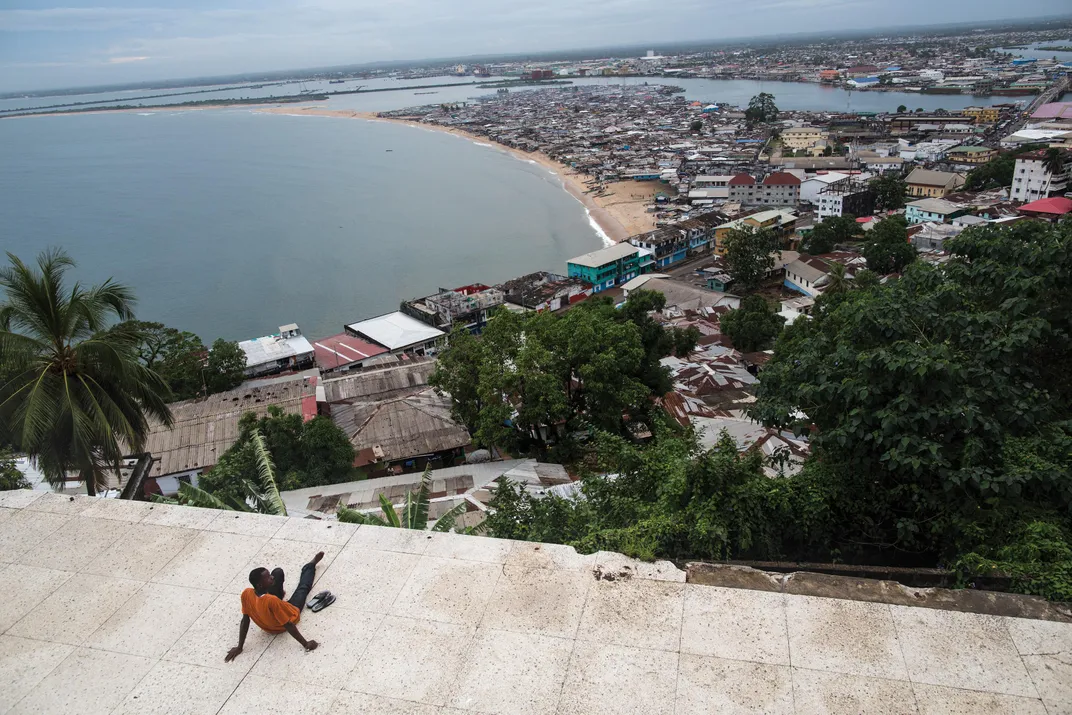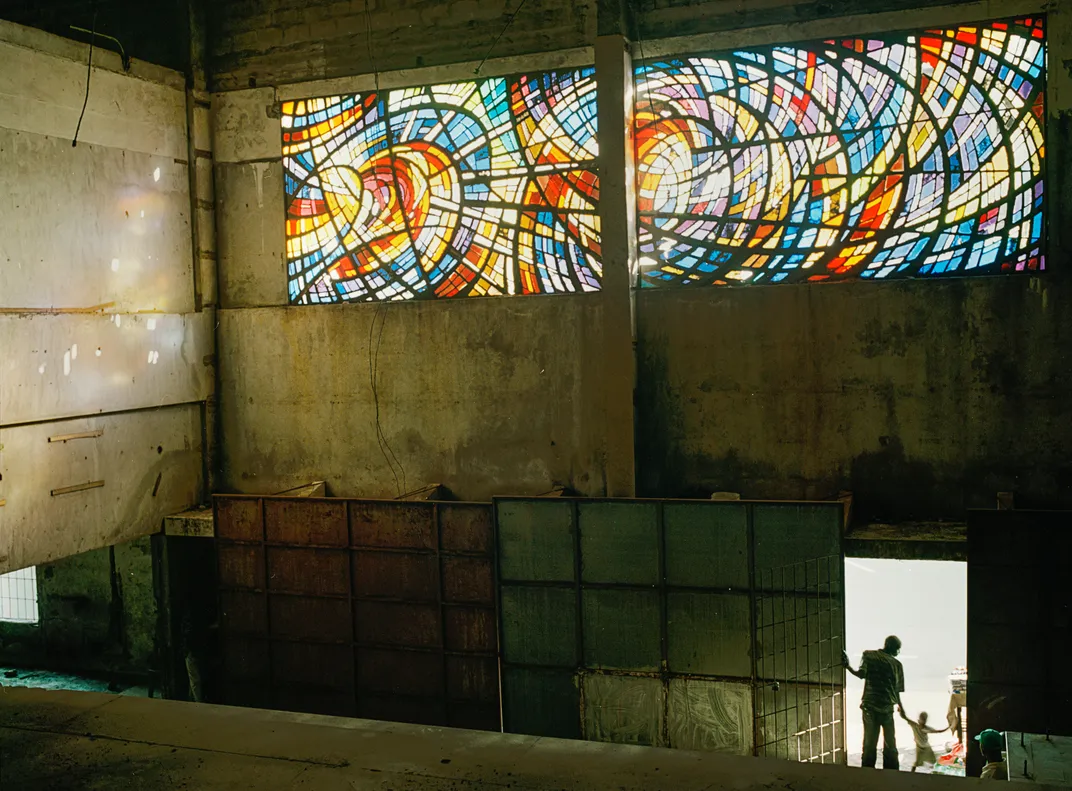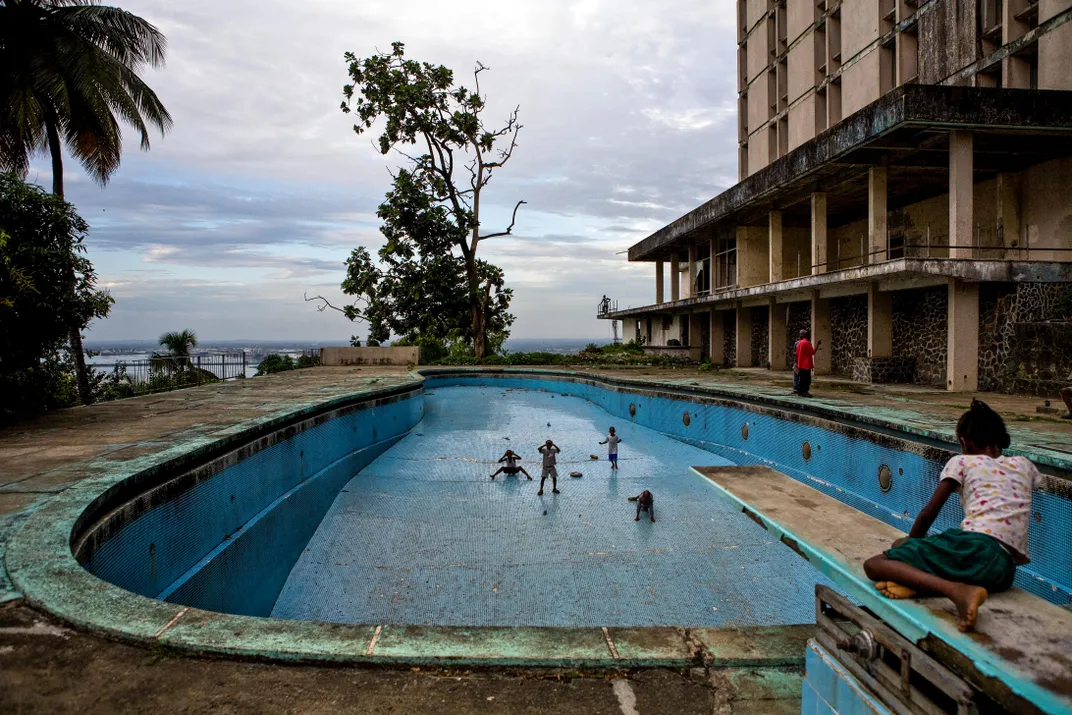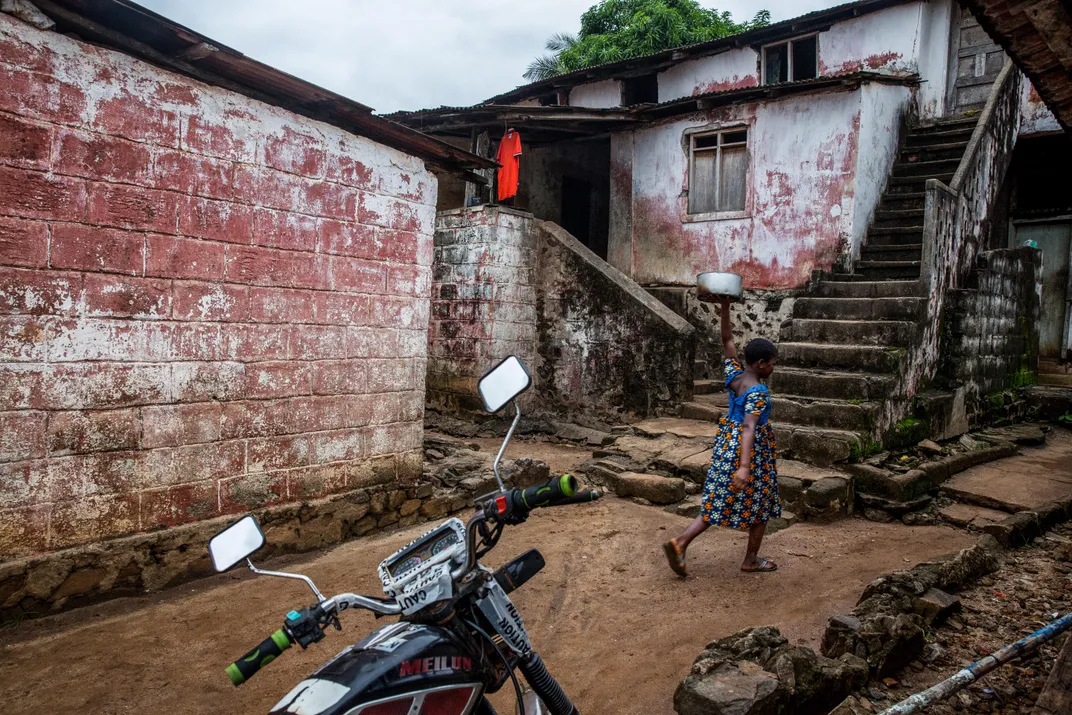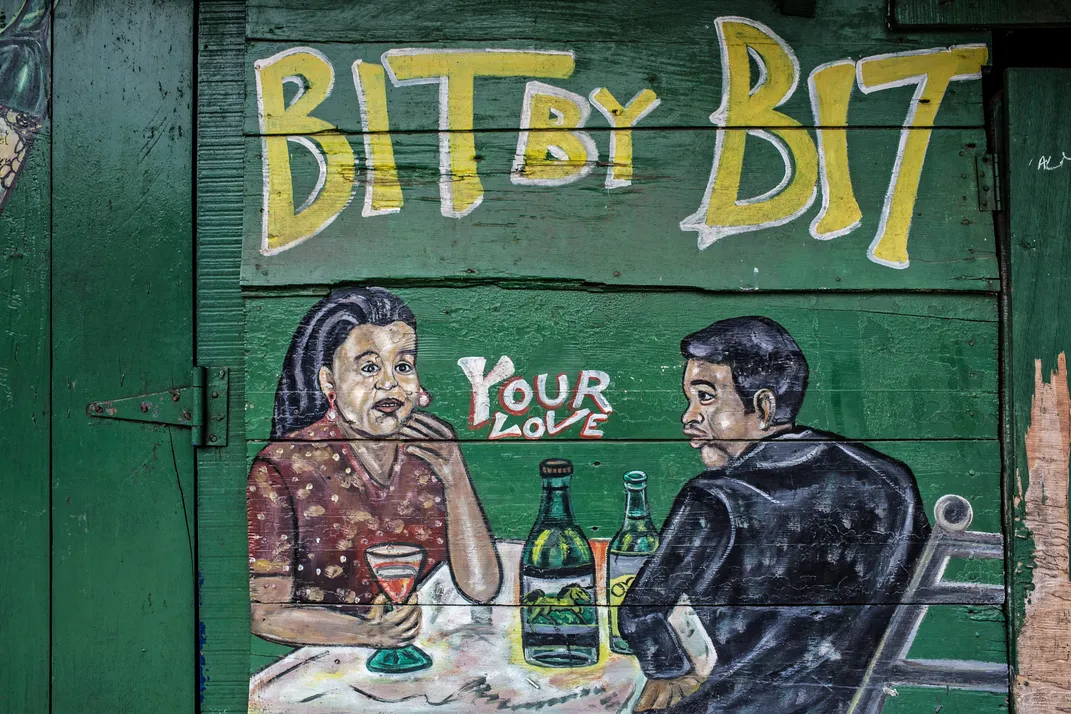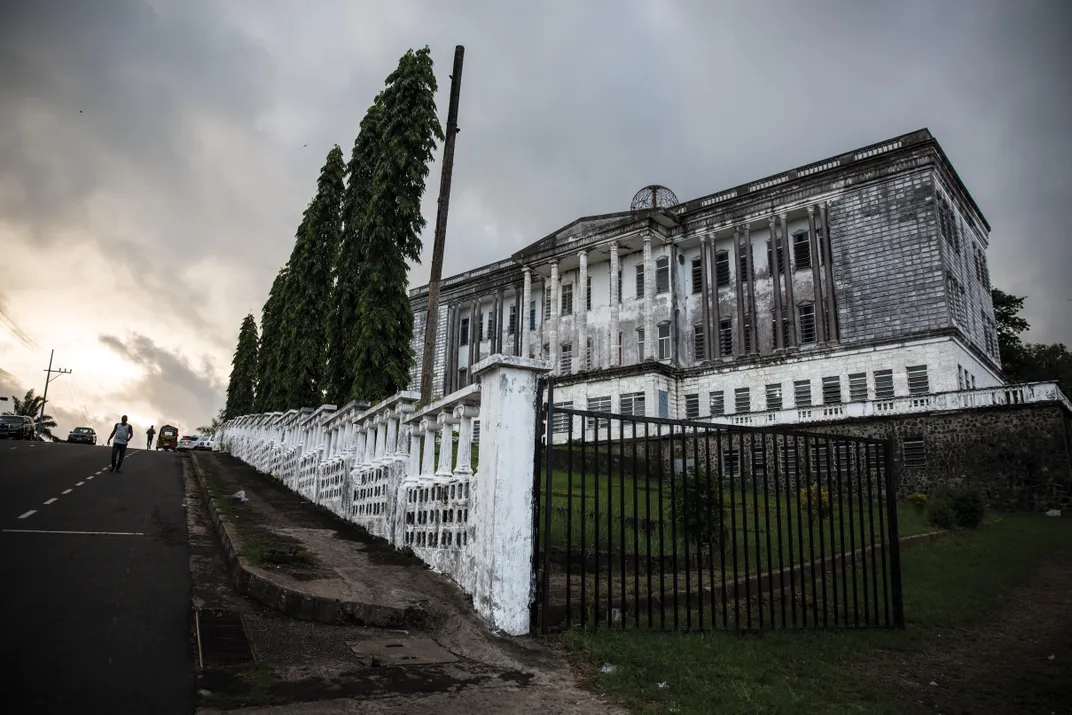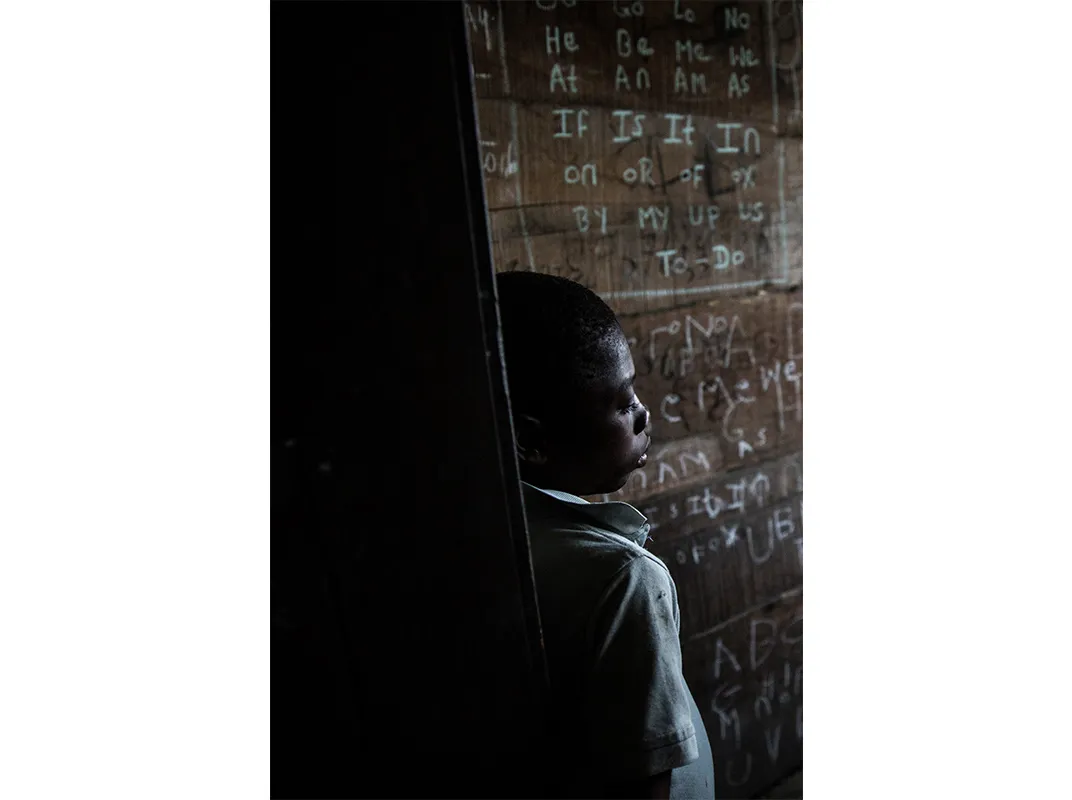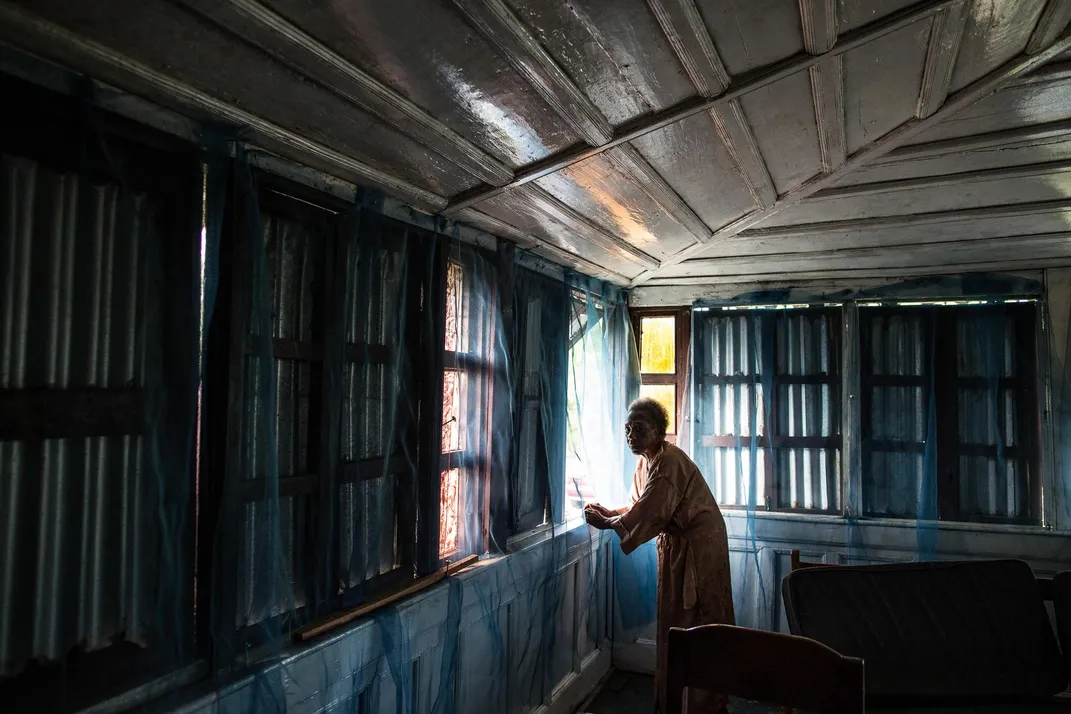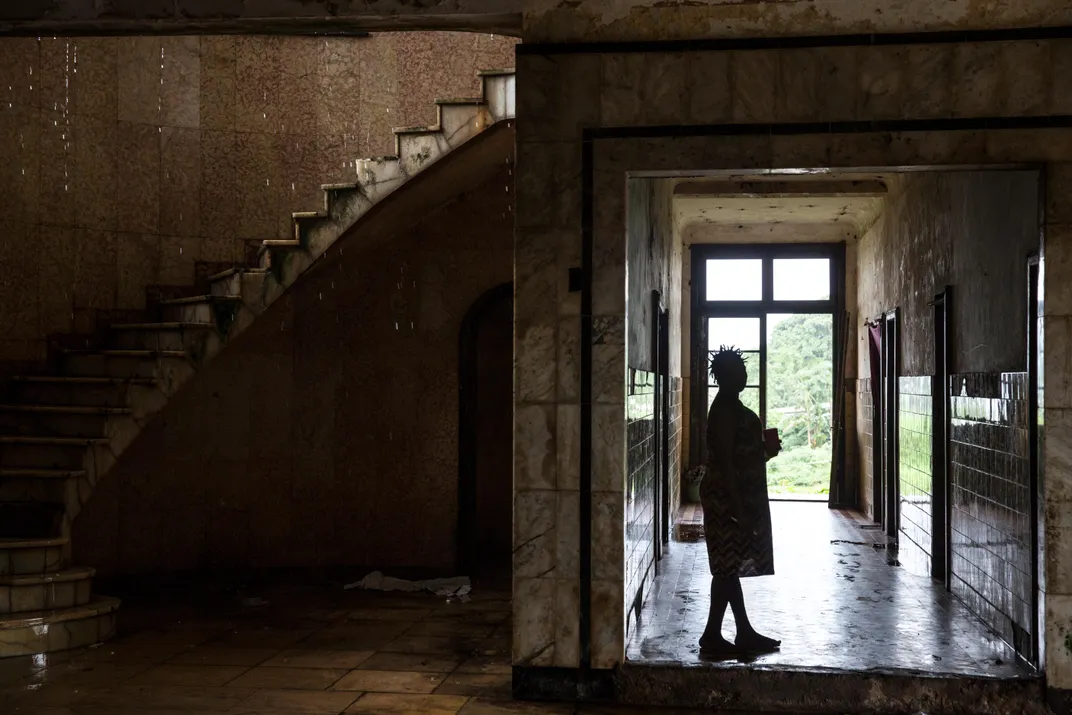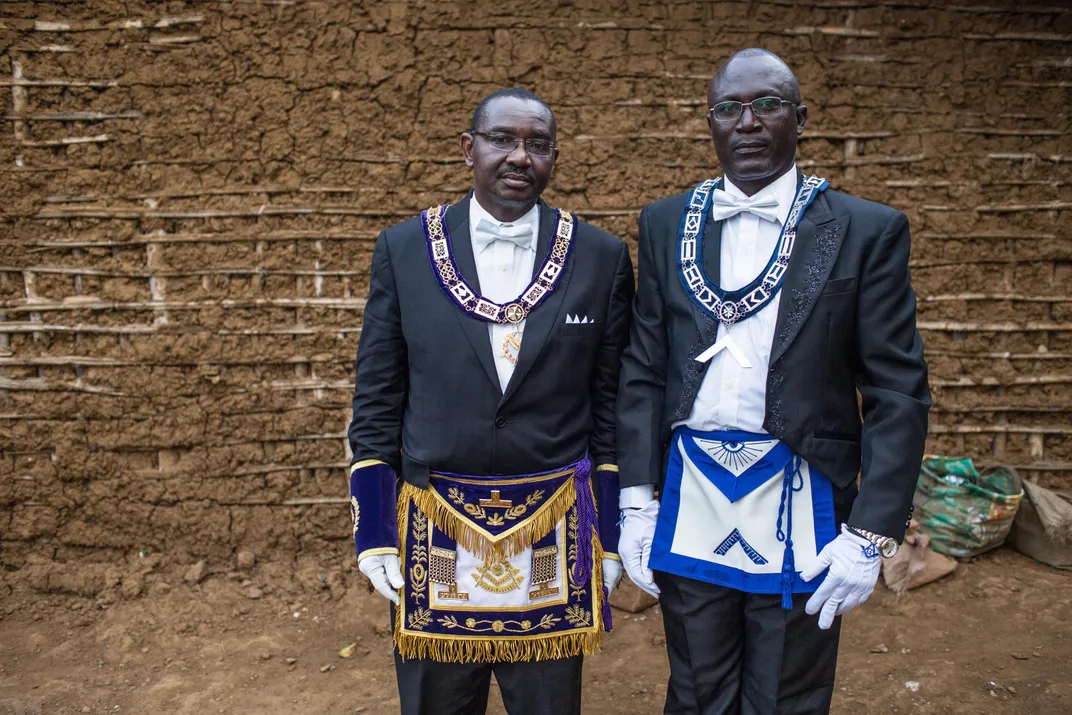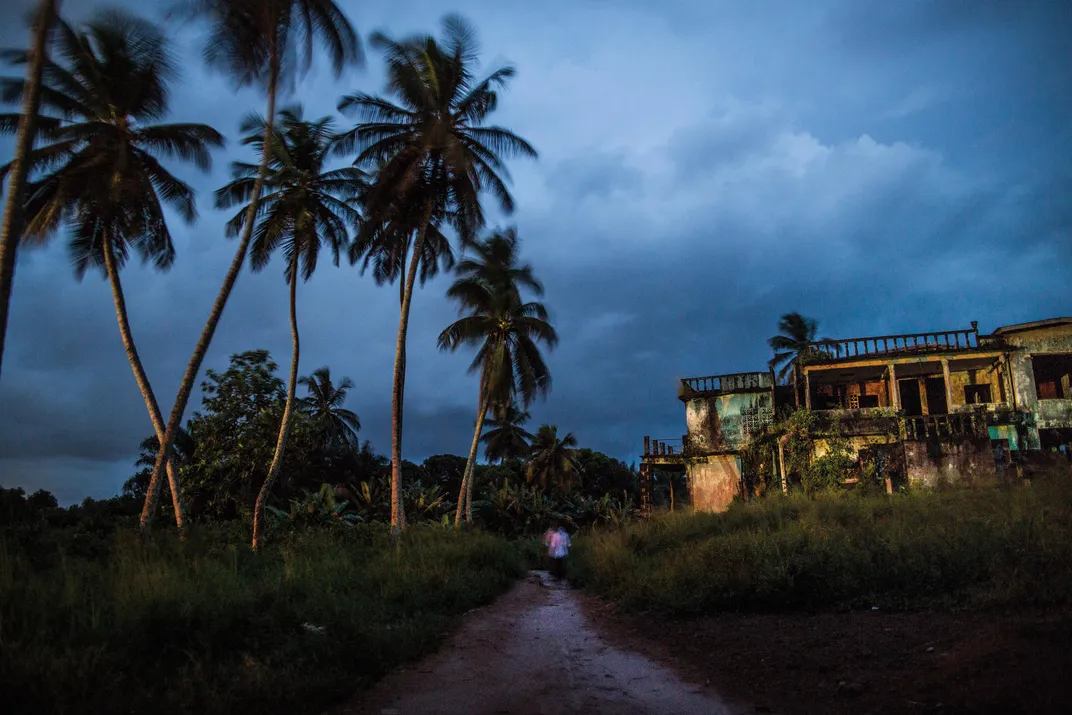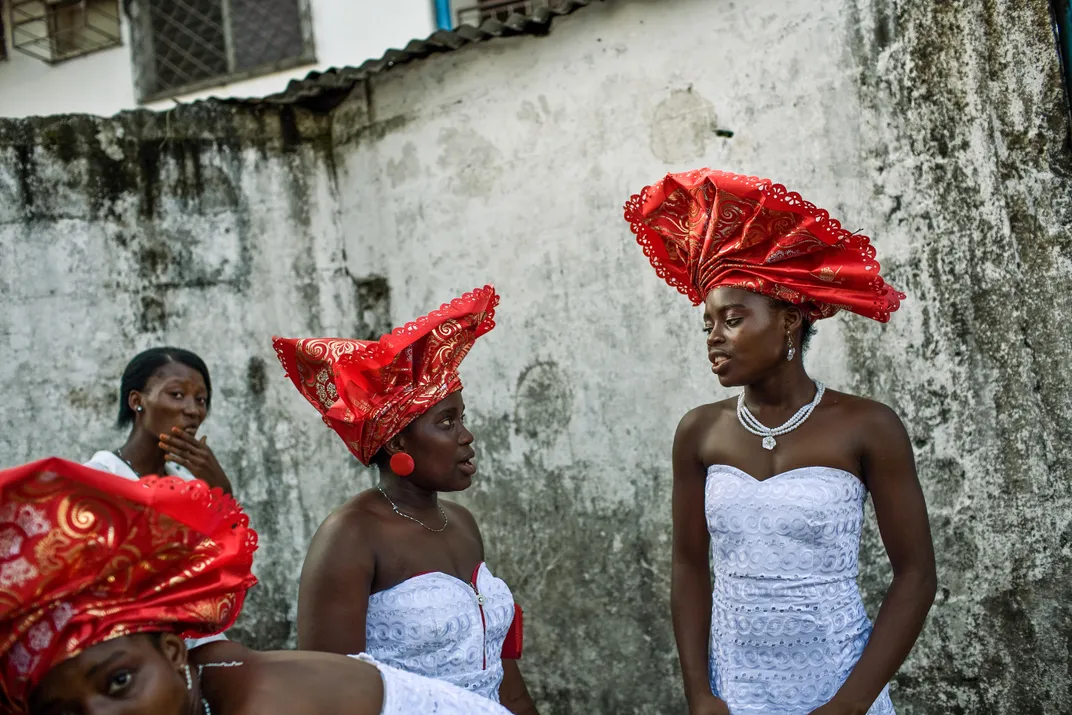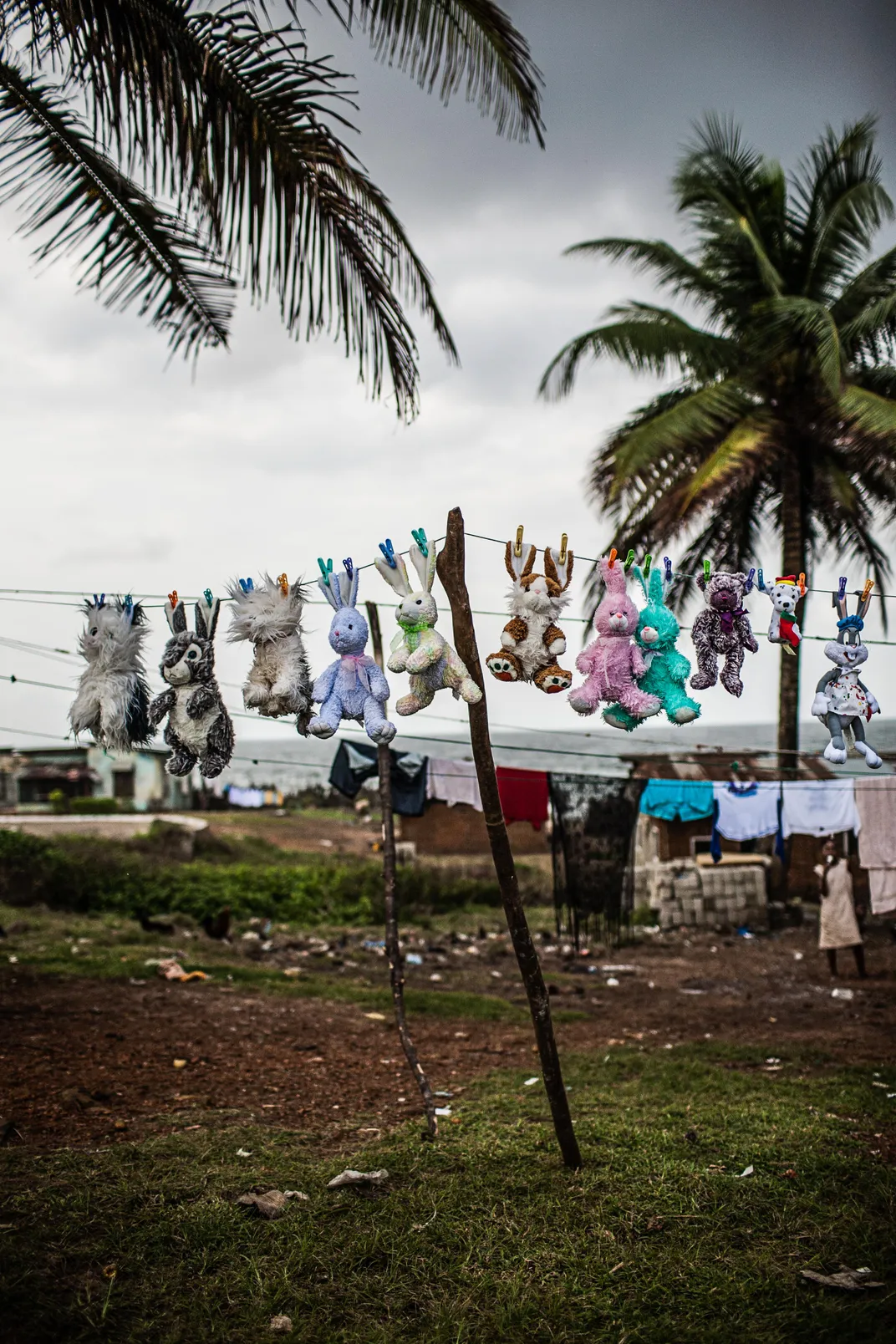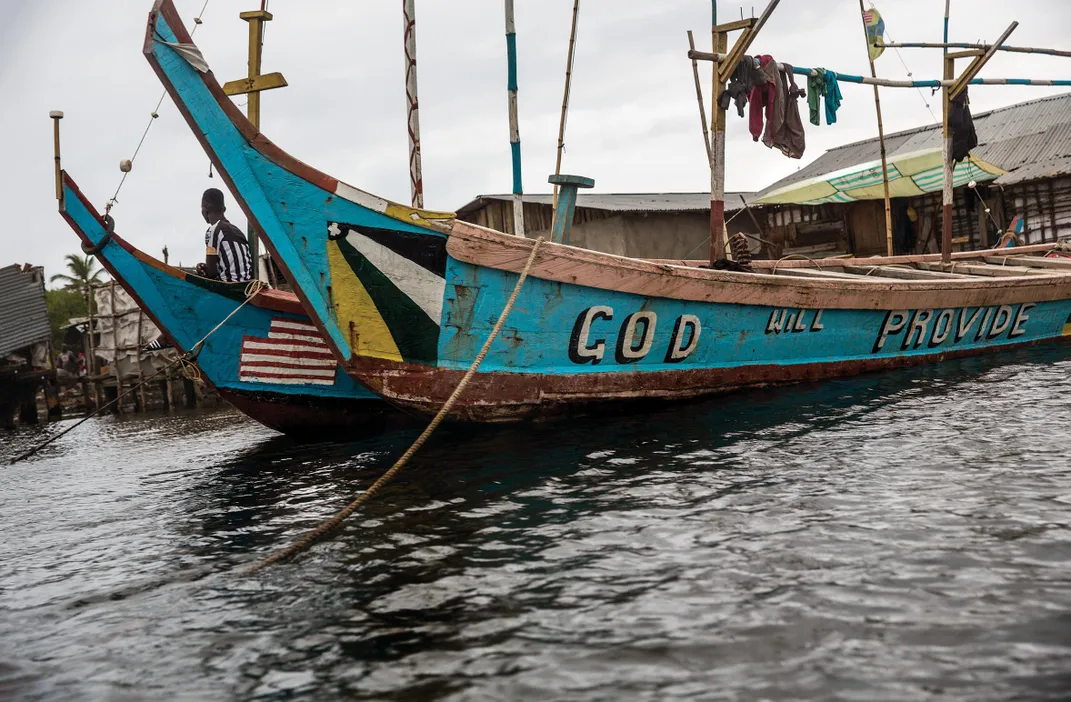These Abandoned Buildings Are the Last Remnants of Liberia’s Founding History
The world created by former slaves in Liberia was a cruel paradox for more than 150 years
In the front parlor of a dilapidated mansion with a god’s-eye view of the Atlantic a group of young men huddle around a light fixture that washed in from the sea and is covered in barnacles. They chip away at it with a hammer and a machete to open it and see if it can be made to work. They are not having much luck, a commodity that is in short supply around here. The building has no electricity or running water. Wind pushes through broken windows. There are holes in the roof. Rainwater has collected in puddles on the grand marble staircase and throughout the house, a faded yellow modernist structure on the edge of a cliff in the sleepy city of Harper in southeastern Liberia about 15 miles from the border of Ivory Coast.
The short iron fence that surrounds the regal mansion, known locally as “the palace,” bears a monogram—“WVST,” for William Vacanarat Shadrach Tubman, Liberia’s longest-serving president, known for his 27 years of autocratic rule beginning in 1944. But the home of the man called “the father of modern Liberia” because he opened the nation to foreign investment and industry is now in ruins and occupied by squatters, a symbol of how decades of political turmoil have shaken up the old order established by freed American slaves.
Tubman was born in Harper but his paternal grandparents were slaves in Georgia. They were released in 1837 by their wealthy mistress, Emily Tubman of Augusta, and sent to Liberia, founded in 1822 by the American Colonization Society to serve as a haven for the once enslaved. But instead of creating a proverbial land of liberty that made a clean break from their brutal past, the settlers—called “Americo-Liberians” or, if they were Africans who had been trafficked but not to the United States, “Congos”—lorded over the “natives,” denying them political rights and acting like the slave masters they’d escaped. They forced natives to labor in the fields and on rubber plantations, and taxed communities for merely existing. Well-off settlers donned hoop skirts and tailcoats, opened Masonic lodges and built Methodist churches in a conscious effort to emulate the American South. Tensions between Americo-Liberians and natives smoldered for decades, and though Tubman’s administration granted natives the right to vote, among other benefits, the conflict exploded nine years after he died, with a violent coup led by the native soldier Samuel Doe, ending the Americo-Liberians’ dominance.
“Nineteen eighty was clearly a response to 133 years of rule that wasn’t inclusive enough and didn’t provide enough economic opportunities for everyone,” says Aaron Weah, the Liberia country director for Search for Common Ground, a U.S.-based nongovernmental organization.
Today, no place captures the ambiguous world of the Americo-Liberians better than Harper, whose oldest neighborhoods are reminiscent of New Orleans. Once occupied by the ruling elite, houses in the style of plantation mansions now stand silent and ghostly. “I was always fascinated by the American antebellum South—how plantation culture seemed so genteel on the surface but was so deeply cruel and built on the exploitation of others,” says the photographer Glenna Gordon, a Southern California native who has traveled in Liberia regularly over the last seven years. “I wanted to explore this tension, and in Harper some of the first freed slaves came and replicated the inequality that they had been subjected to. I sought traces of these systems, the artifacts of American wrongs replicated elsewhere.”
Americo-Liberians still wield political and economic influence, but they no longer enjoy the total control they once did. President Ellen Johnson Sirleaf, elected in 2006, is descended from natives, though she grew up in the Americo-Liberian world, attending the most prestigious schools before going to college in the United States.
“Those who see themselves as pure settlers are very few though they retain a sense of unique identity,” says Elwood Dunn, a Liberian historian.
For the older generation of Americo-Liberians, the 1960s and ’70s were halcyon days. Caroline Dennis Costa, a diminutive 85- year-old, peers out of the attic window of the old country house built by her father, a settler, in Careysburg, northeast of Monrovia, the capital. Dressed in pajamas and a powder pink satin dressing gown, the former nurse speaks nostalgically about the decades under Tubman and his successor, William Tolbert, who was executed by Doe and his soldiers.
“We had everything,” she says of the high level of development before the coup. She worked at John F. Kennedy Medical Center in Monrovia, then a state-of-the-art facility that attracted patients from all over. It has declined in quality and people now joke that JFK means “Just for Killing.” Dennis lives alone and fears the natives who inhabit former settler houses on her street. “They still have a grudge,” she says, but “they fail to realize that no matter what they do, they cannot keep the Congo man down.”
George Yancy, a prosperous Americo-Liberian in Harper, is a 40-year-old financial administrator at William V.S. Tubman University. A Freemason, he zooms around town on a lime green motorcycle adorned with the Masonic square and compasses. To him, the distinction between settler and native isn’t valid, given that the first “settlers” were descended from Africans. “I don’t like to go the route of ‘settler’ and ‘natives,’ because the people you call settlers were natives sold by natives to those merchants that came to barter with salt and cloth,” Yancy says angrily.
History, meanwhile, moves on. Most of the men, women and children squatting in Tubman’s old mansion are native Liberians, though some of them had fled to Ivory Coast during the civil wars. What did they think of living in the great president’s house? A young man named Masir replies, “Wasn’t Tubman married to Queen Elizabeth?”
Related Reads
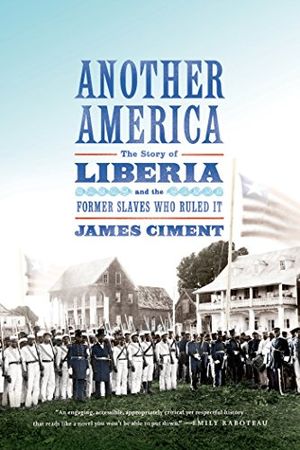
Another America: The Story of Liberia and the Former Slaves Who Ruled It
